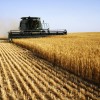 Higher wheat prices created the impetus for growing wheat in the southeastern United States. Since increasing amounts of corn have been diverted to ethanol production, there is a shortage of grain for America’s livestock industry. This shortage results in higher wheat and soybean prices. Wheat and soybean have been grown together as a double crop throughout the Southeast for many years, which generally increases profitability compared with growing only one of the crops. Planting wheat followed by cotton, peanut or grain sorghum has also become a common practice. The best management practices for high yields of wheat in the Southeast Coastal Plain are well established. This 3-page fact sheet lists production practices for small grains in Florida. Written by D.L. Wright, A.R. Blount, R.D. Barnett, C.L. Mackowiak, N. Dufault, and J. Marois, and published by the UF Department of Agronomy, October 2013.
Higher wheat prices created the impetus for growing wheat in the southeastern United States. Since increasing amounts of corn have been diverted to ethanol production, there is a shortage of grain for America’s livestock industry. This shortage results in higher wheat and soybean prices. Wheat and soybean have been grown together as a double crop throughout the Southeast for many years, which generally increases profitability compared with growing only one of the crops. Planting wheat followed by cotton, peanut or grain sorghum has also become a common practice. The best management practices for high yields of wheat in the Southeast Coastal Plain are well established. This 3-page fact sheet lists production practices for small grains in Florida. Written by D.L. Wright, A.R. Blount, R.D. Barnett, C.L. Mackowiak, N. Dufault, and J. Marois, and published by the UF Department of Agronomy, October 2013.
http://edis.ifas.ufl.edu/ag293
Tag: Small Grains
AN223 Triticale as a Forage Crop for the Southeastern United States
AN223, a 5-page fact sheet by Bob Myer, Ann Blount, Cheryl Mackowiak, and Ron Barnett, reintroduces this man-made cross of wheat and rye that has potential as a grain crop or forage crop in the Southeastern United States — results of forage yield trials, present status as forage, nutritional value, and recommended varieties. Includes references. Published by the UF Department of Animal Sciences, August 2009.
http://edis.ifas.ufl.edu/AN223